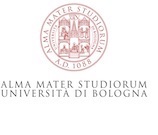KELLER EASTERLINGMedium DesignMORNING COURSE (Aula Fumagalli)
|
|
|
A different habit of mind about design and politics might begin with one simple observation. Culture is very good at pointing to things and calling their name, but not so good at describing the interactivity or chemistry between things. While designers are good at designing buildings, they might also design the medium in which those buildings are suspended. The extended repertoire offers additional aesthetic pleasures and political capacities that may elevate the status of spatial variables in culture. In medium design, the logics and rules for addressing problem are turned upside down or inside out. With a focus on ground instead of figure or field instead of object, medium can’t really be assessed by a name, shape or outline but rather by what might be called disposition—latent properties that unfold over time and territory, propensities within a context or potentials in relative position. That disposition, that agency in arrangement, like an operating system or a growth medium, decides what will live or die. In this matrix of activity where it is easier to detect, discrepancy, latency, temperament and indeterminacy, right answers are less important than unfolding or branching sequences of response that are not reliant on discrete events or solutions. Benefitting from an artistic curiosity about reagents and spatial mixtures or spatial wiring, medium design suggests different organs of design or different ways to register the design imagination. Beyond buildings, master plans, declarations, laws, or standards, it considers the political powers of multipliers, switches or time released organs of interplay like bargains, chain reactions, ratchets. These are forms that might inflect populations of objects or set up relative potentials within them. Medium Design, is ever present in many disciplines. It learns from the work of Harold Innis or Marshall McCluhan about mass communication. But it is also something like the non-modern thinking that according to Bruno Latour steps out of its hierarchies and ultimates into a “as vast as china, and as little known.” It is related to the focus on disposition/dispositif /disposition that fascinates Michele Foucault, Giorgio Agamben, or Gilbert Ryle. It is attuned to reverberations of aesthetic practices in cultural networks about which Walter Benjamin or Jacques Rancière write. From J.J. Gibson, there is a sense of the affordances of things. Or from Gregory Bateson, there is a sense of temperament in the interplay of things. At a moment of digital ubiquity, it may be easier to treat digital platforms as primary in contemporary innovation and to believe that, if coated with sensors in an internet of things, the stiff, dumb world will suddenly become responsive and “smart.” But the heavy lumpy components of space are themselves information systems that don’t really need digital devices to make them dance. As Gregory Bateson noted, a man a tree and an ax is an information system. So, since architecture and urbanism are making radical changes to the globalizing world, space may be an underexploited medium of innovation. Bored with the rhetorical, the seminar meetings foreground actual experiments in medium design that attempt to leverage some heavy spatial consequences
|





 Keller Easterling
Keller Easterling